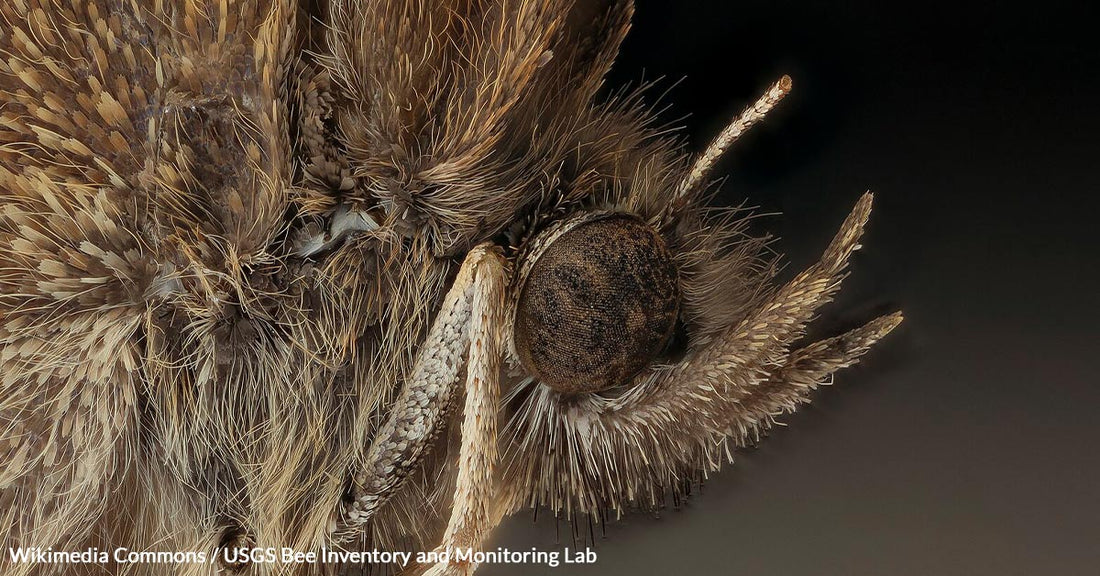Michigan's Rare Mitchell's Satyr Butterfly Teeters on the Brink of Extinction
Matthew Russell
The Mitchell's Satyr butterfly, a rare and beautiful species, is on the verge of extinction.
Found primarily in the fen wetlands of southern Michigan, this medium-sized butterfly is distinguished by its chocolate brown wings adorned with yellow-ringed black eyespots.
Despite its striking appearance, the Mitchell's Satyr is among the world's rarest butterflies and is legally protected as an endangered species.

A Fragile Habitat
The Mitchell's Satyr resides in a unique wetland habitat known as a prairie fen, a type of wetland fed by groundwater rich in nutrients like calcium carbonate. These fens are characterized by their diverse plant life, including sedges and wildflowers, which provide essential food sources for the butterflies. However, prairie fens are increasingly rare due to habitat destruction caused by agricultural development, urbanization, and invasive species, according to the Michigan Natural Features Inventory.
In Michigan, these butterflies are found in only a few locations, such as Barry, Berrien, Branch, Cass, Jackson, Kalamazoo, Lenawee, St. Joseph, Van Buren, Washtenaw, and Wayne counties.
The population has dwindled alarmingly, with sightings becoming more infrequent each year, the Michigan Natural Features Inventory reports.

Threats to Survival
The primary threat to the Mitchell's Satyr is habitat loss. Wetlands are often drained or altered for agricultural use, which disrupts the delicate balance of the fen ecosystem. The introduction of pesticides and fertilizers further contaminates these habitats, making them unsuitable for the butterflies, reports Indiana Public Media.
Additionally, the encroachment of invasive species like glossy buckthorn and purple loosestrife exacerbates the problem by outcompeting native plants that the Satyr relies on. Climate change also poses a significant threat. Changes in temperature and precipitation patterns can alter the hydrology of fens, making them less hospitable for the Mitchell's Satyr.

Conservation Efforts
Efforts to save the Mitchell's Satyr are multi-faceted, involving habitat restoration, captive breeding, and relocation programs. The U.S. Fish and Wildlife Service, along with various conservation organizations, are leading these initiatives. One successful example is the Grand River Fen Preserve, managed by The Nature Conservancy.
This site has one of the largest remaining populations of the Mitchell's Satyr and serves as a critical habitat for the species. Restoration efforts at Grand River Fen include removing invasive species, reintroducing fire as a natural disturbance, and monitoring the fen's hydrology.
These measures help maintain the plant communities that the Mitchell's Satyr depends on for survival. TNC and its partners have also relocated butterflies to new sites, such as Park Lyndon in Washtenaw County, to expand their range and establish new populations, The Nature Conservancy reports.
Captive breeding is another crucial strategy. The John Ball Zoo in Grand Rapids and the Toledo Zoo in Ohio have been involved in breeding Mitchell's Satyrs in captivity. According to MLive, these efforts aim to bolster wild populations by releasing captive-bred butterflies into suitable habitats.
Researchers are closely monitoring these reintroductions to ensure the butterflies adapt and thrive in their new environments.

The Importance of Public Awareness
Public awareness and education are vital components of conservation efforts. Organizations like the Sarett Nature Center near Benton Harbor offer educational programs and guided walks to inform visitors about the Mitchell's Satyr and its habitat.
These programs emphasize the importance of staying on designated trails to protect the delicate fen ecosystem and the butterfly's eggs, MLive reports.

Hope for the Future
While the Mitchell's Satyr faces significant challenges, ongoing conservation efforts provide hope for its future. By restoring and protecting its habitat, breeding butterflies in captivity, and relocating populations to new sites, conservationists are working tirelessly to ensure this rare butterfly does not disappear from our world.
The Mitchell's Satyr serves as a bellwether for the health of wetland ecosystems. Protecting this species helps preserve the biodiversity of prairie fens, which are home to numerous plants and animals.
As conservationist Ashley Cole-Wick aptly told MLive, "Every individual species is like money in our biodiversity bank, and when we lose them, it's money we're never getting back."
The Mitchell's Satyr butterfly is a symbol of the fragility and resilience of nature. Its struggle for survival highlights the broader issues facing our environment and the urgent need for conservation.
By protecting this rare butterfly and its habitat, we can contribute to the preservation of our planet's biodiversity for future generations. Click below to take action for rare butterflies.

